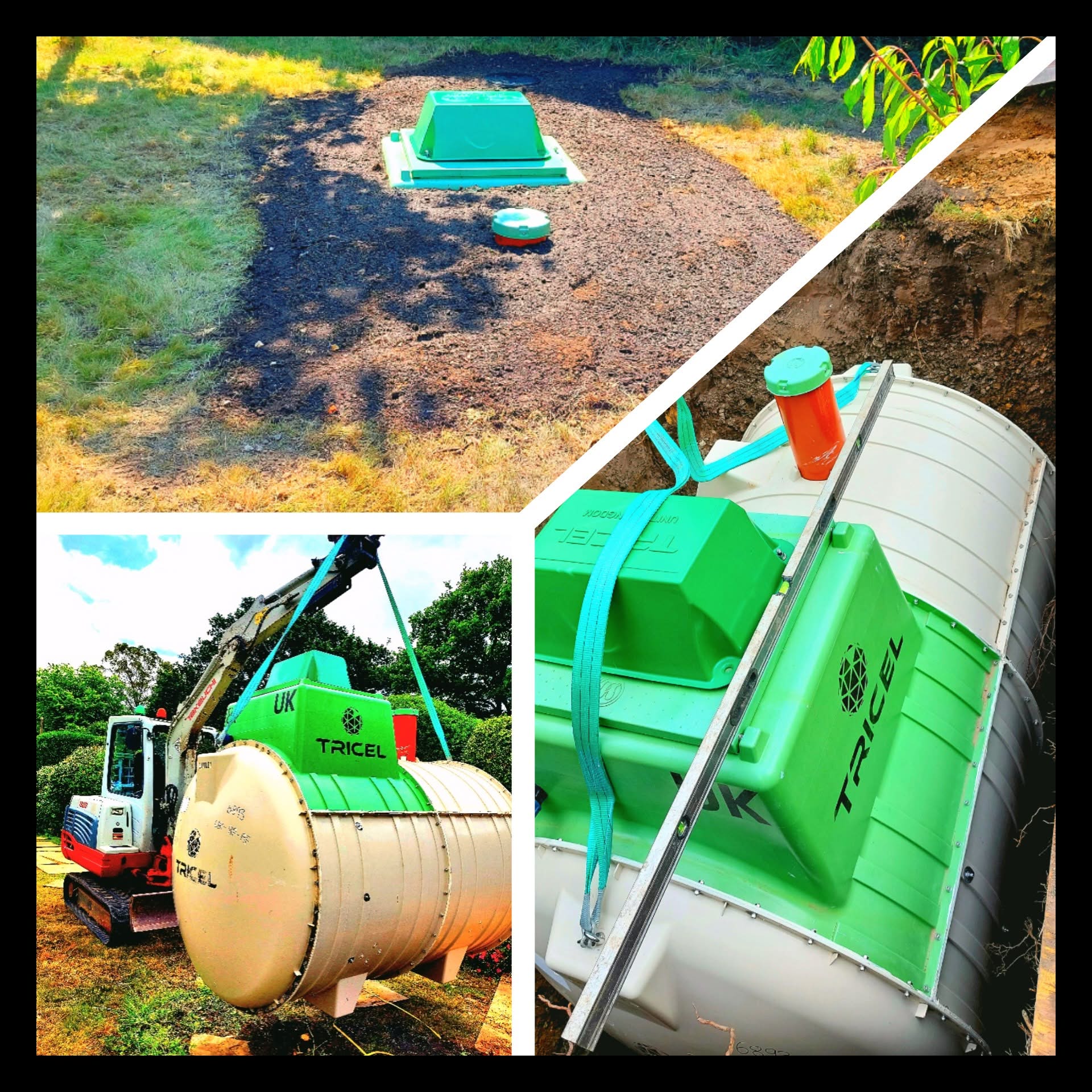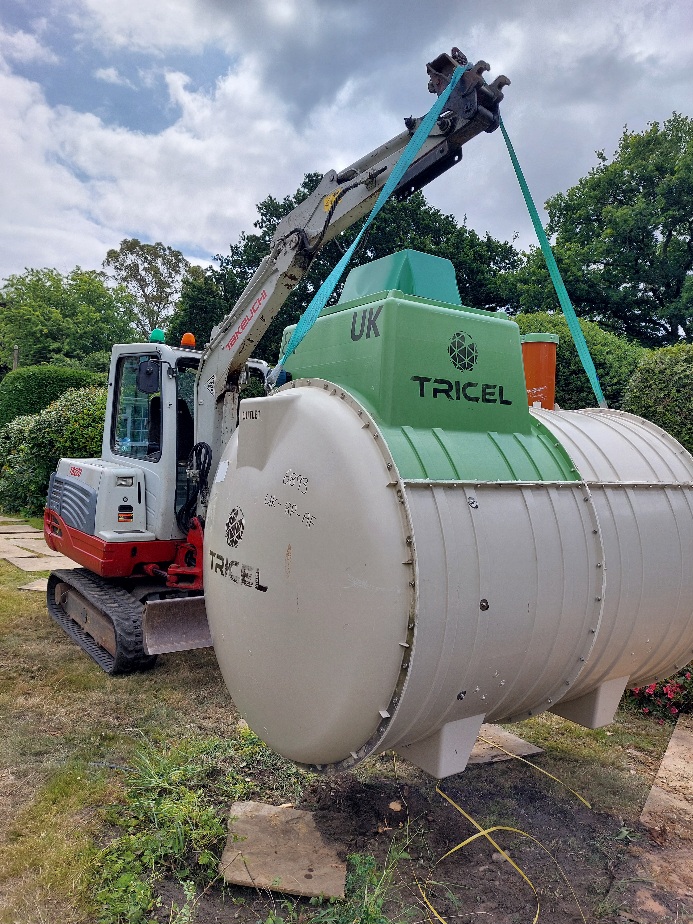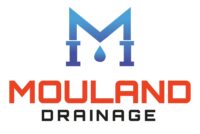October 2025
Septic tank upgrade & sewage treatment plant installation in Lyndhurst and Minstead
Septic tank upgrade & sewage treatment plant installation in Lyndhurst and Minstead
Sewage Treatment Plant Installation ✅️
If you are considering enhancing your septic tank system with a sewage treatment plant package, we encourage you to contact us to discuss the available options. 🤔
We are equipped to support you through every phase of your new sewage treatment plant installation, starting from the initial building control application to system design, culminating in final approval. 🤝
As experts 🧐 in sewage treatment plant installations, we bring substantial experience in managing a wide variety of sewage treatment plants and pumping stations.
We are always here to help on ☎️ 01590 435100
Services we offer...✅️
• Drain Unblocking
• Drain Cleaning
• Drain Repairs
• CCTV Survey’s
• High Pressure Jetting
• Pitch Fibre Refurbishment
• Drain Relining
• Sewage Treatment Plant installations and servicing.
💻 www.moulanddrainage.co.uk or 📩greg@moulanddrainage.co.uk




Septic tank upgrade & sewage treatment plant installation in Verwood & Alderholt
Septic tank upgrade & sewage treatment plant installation in Verwood & Alderholt
Sewage Treatment Plant Installation ✅️
If you are considering enhancing your septic tank system with a sewage treatment plant package, we encourage you to contact us to discuss the available options. 🤔
We are equipped to support you through every phase of your new sewage treatment plant installation, starting from the initial building control application to system design, culminating in final approval. 🤝
As experts 🧐 in sewage treatment plant installations, we bring substantial experience in managing a wide variety of sewage treatment plants and pumping stations.
We are always here to help on ☎️ 01590 435100
Services we offer...✅️
• Drain Unblocking
• Drain Cleaning
• Drain Repairs
• CCTV Survey’s
• High Pressure Jetting
• Pitch Fibre Refurbishment
• Drain Relining
• Sewage Treatment Plant installations and servicing.
💻 www.moulanddrainage.co.uk or 📩greg@moulanddrainage.co.uk




Septic tank upgrade & sewage treatment plant installation in Bramshaw & Cadnam
Septic tank upgrade & sewage treatment plant installation in Bramshaw & Cadnam
Sewage Treatment Plant Installation ✅️
If you are considering enhancing your septic tank system with a sewage treatment plant package, we encourage you to contact us to discuss the available options. 🤔
We are equipped to support you through every phase of your new sewage treatment plant installation, starting from the initial building control application to system design, culminating in final approval. 🤝
As experts 🧐 in sewage treatment plant installations, we bring substantial experience in managing a wide variety of sewage treatment plants and pumping stations.
We are always here to help on ☎️ 01590 435100
Services we offer...✅️
• Drain Unblocking
• Drain Cleaning
• Drain Repairs
• CCTV Survey’s
• High Pressure Jetting
• Pitch Fibre Refurbishment
• Drain Relining
• Sewage Treatment Plant installations and servicing.
💻 www.moulanddrainage.co.uk or 📩greg@moulanddrainage.co.uk




Septic tank upgrade & sewage treatment plant installation in Woodgreen & Breamore – SP6
Septic tank upgrade & sewage treatment plant installation in Woodgreen & Breamore - SP6
Sewage Treatment Plant Installation ✅️
If you are considering enhancing your septic tank system with a sewage treatment plant package, we encourage you to contact us to discuss the available options. 🤔
We are equipped to support you through every phase of your new sewage treatment plant installation, starting from the initial building control application to system design, culminating in final approval. 🤝
As experts 🧐 in sewage treatment plant installations, we bring substantial experience in managing a wide variety of sewage treatment plants and pumping stations.
We are always here to help on ☎️ 01590 435100
Services we offer...✅️
• Drain Unblocking
• Drain Cleaning
• Drain Repairs
• CCTV Survey’s
• High Pressure Jetting
• Pitch Fibre Refurbishment
• Drain Relining
• Sewage Treatment Plant installations and servicing.
💻 www.moulanddrainage.co.uk or 📩greg@moulanddrainage.co.uk




Septic tank upgrade & sewage treatment plant installation in Godshill – The New forest
Septic tank upgrade & sewage treatment plant installation in Godshill - The New forest
Sewage Treatment Plant Installation ✅️
If you are considering enhancing your septic tank system with a sewage treatment plant package, we encourage you to contact us to discuss the available options. 🤔
We are equipped to support you through every phase of your new sewage treatment plant installation, starting from the initial building control application to system design, culminating in final approval. 🤝
As experts 🧐 in sewage treatment plant installations, we bring substantial experience in managing a wide variety of sewage treatment plants and pumping stations.
We are always here to help on ☎️ 01590 435100
Services we offer...✅️
• Drain Unblocking
• Drain Cleaning
• Drain Repairs
• CCTV Survey’s
• High Pressure Jetting
• Pitch Fibre Refurbishment
• Drain Relining
• Sewage Treatment Plant installations and servicing.
💻 www.moulanddrainage.co.uk or 📩greg@moulanddrainage.co.uk




Septic tank upgrade & sewage treatment plant installation in Burley and Bransgore
Septic tank upgrade & sewage treatment plant installation in Burley and Bransgore
Sewage Treatment Plant Installation ✅️
If you are considering enhancing your septic tank system with a sewage treatment plant package, we encourage you to contact us to discuss the available options. 🤔
We are equipped to support you through every phase of your new sewage treatment plant installation, starting from the initial building control application to system design, culminating in final approval. 🤝
As experts 🧐 in sewage treatment plant installations, we bring substantial experience in managing a wide variety of sewage treatment plants and pumping stations.
We are always here to help on ☎️ 01590 435100
Services we offer...✅️
• Drain Unblocking
• Drain Cleaning
• Drain Repairs
• CCTV Survey’s
• High Pressure Jetting
• Pitch Fibre Refurbishment
• Drain Relining
• Sewage Treatment Plant installations and servicing.
💻 www.moulanddrainage.co.uk or 📩greg@moulanddrainage.co.uk




Septic tank upgrade & sewage treatment plant installation Cranborne and Wimborne
Septic tank upgrade & sewage treatment plant installation Cranborne and Wimborne
Sewage Treatment Plant Installation ✅️
If you are considering enhancing your septic tank system with a sewage treatment plant package, we encourage you to contact us to discuss the available options. 🤔
We are equipped to support you through every phase of your new sewage treatment plant installation, starting from the initial building control application to system design, culminating in final approval. 🤝
As experts 🧐 in sewage treatment plant installations, we bring substantial experience in managing a wide variety of sewage treatment plants and pumping stations.
We are always here to help on ☎️ 01590 435100
Services we offer...✅️
• Drain Unblocking
• Drain Cleaning
• Drain Repairs
• CCTV Survey’s
• High Pressure Jetting
• Pitch Fibre Refurbishment
• Drain Relining
• Sewage Treatment Plant installations and servicing.
💻 www.moulanddrainage.co.uk or 📩greg@moulanddrainage.co.uk




Septic tank upgrade & sewage treatment plant installation Beaulieu, Brockenhurst and East Boldre
Septic tank upgrade & sewage treatment plant installation Beaulieu, Brockenhurst and East Boldre
Sewage Treatment Plant Installation ✅️
If you are considering enhancing your septic tank system with a sewage treatment plant package, we encourage you to contact us to discuss the available options. 🤔
We are equipped to support you through every phase of your new sewage treatment plant installation, starting from the initial building control application to system design, culminating in final approval. 🤝
As experts 🧐 in sewage treatment plant installations, we bring substantial experience in managing a wide variety of sewage treatment plants and pumping stations.
We are always here to help on ☎️ 01590 435100
Services we offer...✅️
• Drain Unblocking
• Drain Cleaning
• Drain Repairs
• CCTV Survey’s
• High Pressure Jetting
• Pitch Fibre Refurbishment
• Drain Relining
• Sewage Treatment Plant installations and servicing.
💻 www.moulanddrainage.co.uk or 📩greg@moulanddrainage.co.uk





